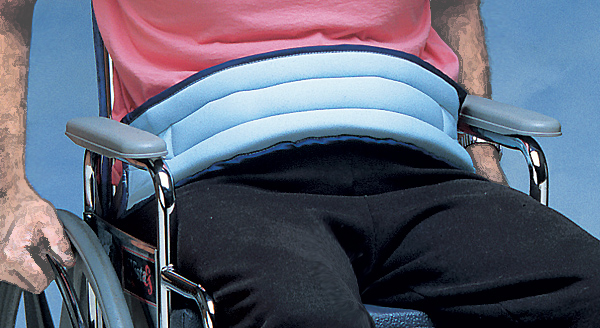Ally, an LPN, works on a Special Care Unit in a residential care facility. Mr. Bean, an 86–year–old resident diagnosed with Alzheimer’s disease, mobilizes using a wheelchair.

photo courtesy of North Coast Medical
Recently, Mr. Bean has had numerous falls when attempting to get up on his own. Ally has tried to protect Mr. Bean from falling by using careful observation; however, she has not been successful in keeping him safe.
What's next?
-
Ally assesses Mr. Bean to determine why he is falling and the best way to protect him
-
Ally decides that for the short term, a lap restraint is most appropriate whenever he is in his wheelchair
-
Ally reviews the facility policy, asks for input from Mr. Bean, his family and the team caring for Mr. Bean, and seeks an order for the use of a lap restraint from Mr. Bean’s doctor before applying the lap restraint
-
Ally explains to Mr. Bean and his family the rationale for using a lap restraint, including the risks and benefits, and seeks their consent to use it
-
Ally revises Mr. Bean’s plan of care to include applying a lap restraint while he is up in his wheelchair; the plan of care will be re-evaluated daily
-
Ally instructs the health care assistants on the correct use of a lap restraint, including proper positioning for Mr. Bean, monitoring him for any signs of agitation, and offering food, fluids and toileting at regular intervals
-
Ally routinely documents the use of the lap restraint and Mr. Bean’s response
What is entry-level LPN practice?
Entry-level practical nursing programs teach applying restraints
Which BCCNM limits and conditions apply?
LPNs apply restraints when an order from an authorized health professional is in place.
When acting
with an order, LPNs follow BCCNM's LPN Standards for Acting with an Order.